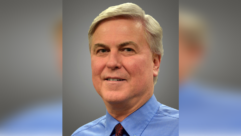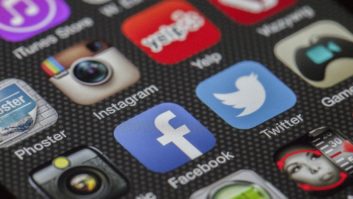
A DAB+ module, on display at the Digital Radio Summit. GENEVA — The European Broadcasting Union’s “Digital Radio Summit,” held in Geneva on Feb. 12 reflected the significant interest in digital radio across Europe.
The summit, which takes place during a week when the EBU also hosts meetings for digital radio industry groups, attracted a full house and offered insight into digital radio adoption from a number of international speakers.
SWITCHOVER
Opening the day, Annika Nyberg Frankenhauser, the EBU’s media director, cited the example of Finnish public service broadcaster YLE’s failure to implement digital radio in the country in the late 1990s, blaming the broadcaster’s inability to cooperate with its commercial radio colleagues. “To drive digital radio, cooperation is key,” she said, in a speech that outlined some of the work that the EBU is currently involved with.
Throughout Europe, countries that are pursuing a digital radio strategy are doing so using DAB+ in Band III. An increase in choice is cited as being the main consumer benefit, as well as sound quality benefits in comparison to AM broadcasts. For multichannel national and regional broadcasters, DAB+ offers reductions in transmission costs and spectrum use.
The United Kingdom is the only European country still using the original, backward-compatible, DAB platform, though BBC Principal Systems Architect Lindsay Cornell highlighted that receivers placed in cars will be DAB+ compatible. He pointed out that 43.7 percent of all new cars sold in the U.K. came with DAB+ fitted as standard, and that 23.4 percent of radio listening is now via DAB.
Digital switchover — closing FM broadcasting in favor of digital — is planned in various European countries. This would mean that most large broadcasters would switch to digital radio exclusively, although some small broadcasters would still have access to the FM band. Some EU states are discussing target dates for switchover as well as conditions for analog to be turned off.
Delegates were told that Norway has announced 2017 as its target date with a number of different criteria to achieve in regard to audience penetration and coverage. Denmark has similarly announced 2019 as its target date. The U.K. and Switzerland have agreed to turn off FM when conditions are met; though have yet to commit to a date.
“The question is not whether DAB+ will prevail in Switzerland, it’s when it will do so,” said Nancy Wayland Bigler, from Swiss media regulator Ofcom. She noted that the country’s current FM broadcasting licenses expire in 2019.
MOBILE PHONES
The mobile phone was also a subject of much debate. Javier Sánchez, director of Technical Strategy at Spanish public broadcaster RNE, outlined the EBU’s intention to work with the Universal Smartphone Radio Project. The project, which comprises members from the United States, Australia and Europe, seeks to standardize APIs to radio chips inside mobile devices.
This would ensure broadcast radio is available on a mobile phone and allow apps to use off-air reception as well as Internet streaming. It was noted that activation of FM chips inside mobile phones by manufacturers is decreasing, blamed on a poor user experience. Many speakers dismissed claims that the mobile phone network will replace broadcasting.
Phil Stuchfield, broadcast media specialist from auto manufacturer Jaguar Land Rover noted that AM and FM still remain the most popular in-car entertainment. He quoted company research illustrating that it is nearly double that of the second-most popular source. “3G is not in any way suitable for streaming in-car,” he said. Teracom Radio Product Manager Per Borgå explored whether cellular networks would be able to take on the job of broadcasting radio. Pointing to a white paper commissioned by his company, he noted that radio consumption is high and could not be wholly transferred to mobile networks easily.
Radio consumption in Sweden, the paper’s authors calculated, would account for 190,000 terabytes of data per year, which is more data transfer than the entire Swedish mobile networks transfer annually. The LTE broadcast mode was not practicable for mobile networks to implement, he explained, and the mobile networks were not reliable enough for radio broadcast.
HYBRID RADIO
Nick Piggott, chair of the RadioDNS Hybrid Radio project, announced that hybrid radio had been incorporated into a range of Samsung smartphones in Europe and Asia. The newly released Samsung Galaxy Express 2 LTE, the Galaxy Core Advance and the Galaxy Grand 2 include RadioDNS Hybrid Radio functionality as standard, enabling a significantly improved FM tuner app with visual accompaniment, interaction and automatic FM-to-internet following.
He highlighted the number of broadcasters now using the RadioDNS service, and described the announcement as a landmark achievement for the not-for-profit project.
Head of Digital Radio Strategy for Belgian public service broadcaster RTBF, Laurent Finet discussed the benefits of a seamless hybrid experience for listeners; and highlighted the advantages that broadcast chips and hybrid radio within connected devices can have on the listener. Calling the result “smart radio,” he highlighted RTBF’s aim to combine the power of free-to-air broadcasting with the Internet backchannel to enable a more social and visual experience for radio.
A packed program, which offered plenty of evidence of collaboration, the EBU Digital Radio Summit clearly demonstrated that the radio industry is increasingly working together across Europe and with other global broadcasters on its digital future.
James Cridland reports on the industry for Radio World from London.












